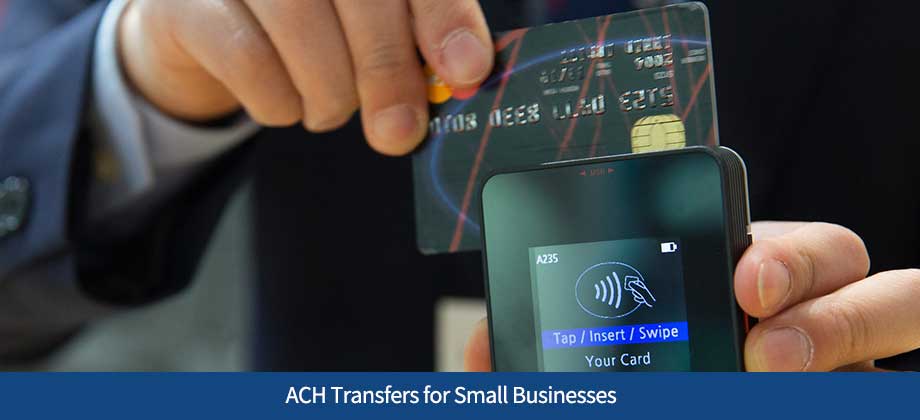ACH Transfers for Small Businesses

Automated Clearing House, or ACH, Payments have been growing steadily over the past decade. Over $72 trillion in payments was transferred in 2021 alone, which equates to a 17 percent increase year-over-year. But what are ACH payments, and what can they do for your small business?
ACH is a network used to transfer money from one bank account to another across the country. Formed in 1974, the National Automated Clearing House Association (NACHA) is the organization that runs this network. It’s responsible for making sure the ACH network is safe and secure, as the network processes a slew of transaction types–including government, B2C (business-to-consumer), B2B (business-to-business), and international payments. ACH transfers are essentially an alternative to using cash, credit cards, or wire transfers. And interestingly enough, the original purpose of ACH payments was to provide an alternative to writing a paper check, which were not able to be processed efficiently by the computer systems at the time.
ACH payments fall into two categories: direct deposit and direct payment. Direct deposits are payments from a business or government to a customer, for things such as payroll or income tax refunds. Direct payments are for making and receiving payments, whether it be by a person or business. This could be sending money to family, buying a product, or paying a utility bill. ACH payments generally take 3-5 days to process, but there are same-day processing options available as well.
What does this mean for small businesses?
Small business owners can benefit greatly by the use of ACH transfers, and we’ve got a few examples to share. This may not come as a surprise, but the primary way the American worker gets paid today is through ACH – in fact, some 93 percent of U.S. workers benefit from ACH in the form of direct deposits to their bank accounts. Paying your employees via direct deposit is probably the top reason to turn to ACH.
Another way ACH transactions can be used by your small business is for paying taxes to the IRS, done via the Electronic Federal Tax Payment System (EFTPS). And because ACH payments have an incredibly low rate of fraud, it’s also wise to use them as a way to pay your suppliers.
Finally, allowing customers to pay your business via ACH-enabled transfers is a safe, convenient method for both parties. They can be set up through a business bank account or a third-party payment processing company.
The Financial Pantry, ARF Financial’s marketing and financial blog, is an online resource designed for small business owners like you. We offer articles with advice on everything from today’s industry trends to what’s happening in the global economy, and then some. Browse through our resources, plus take a look through our white papers and case studies for even more information on loan products to help your business reach its goals.

